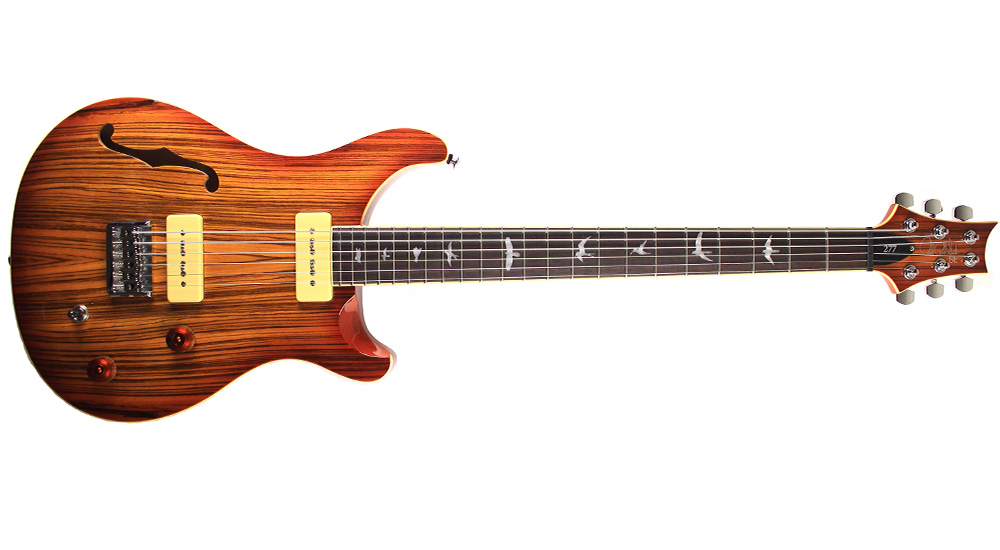Named for its 27.7” scale length, the SE 277 is factory setup in B Standard tuning with 14-68 gauge strings. On paper, the longer scale coupled with the beefy string gauge may seem intimidating, but out of the box, it immediately felt comfortable and easy to get around. Sonically, the tone of the guitar is super resonant and even. The low end is rich thanks to the mahogany back, but retains a glistening high end due to the Zebrawood on top. Without even plugging the guitar into an amp, it has a lot of volume and vibrancy.
In the past I’ve never been a huge fan of soapbar pickups as they just don’t tend to be as dynamic as I want them to be. With that said though, the pickups are so utterly ideal for the warm and rich low end that the guitar produces. For a more funk or jazz style of playing, the cleaner side of the tonal spectrum is absolutely spot on. When I ramped up the gain on my amp, I found that the tone was perfect for emulating the likes of Arctic Monkeys or perhaps Queens of the Stone Age with their signature brand of fuzz, but probably not the ideal sound for anyone looking for the incredibly saturated and machine tight tone that seems to be common place in heavy music these days.
The most astounding thing about the SE 277 is that you would be forgiven for thinking it was a part of PRS’ core model line. The Zebrawood top and matching headstock are stunning, the inclusion of PRS’ coveted bird inlays give the fretboard a tonne of flair and the tasteful use of crème binding around the body and neck just wrap the whole thing up into a damn fine guitar for under $1500.
Baritone guitars aren’t really that common in the greater scheme of things and, as I noted at the start of this review, they tend to be aimed more towards the modern metal player in both sound and aesthetic. Paul Reed Smith have done an impeccable job in bringing a well needed alternative to the market, not only in aesthetic, but with a huge sonic difference to what we tend to see nowadays.

